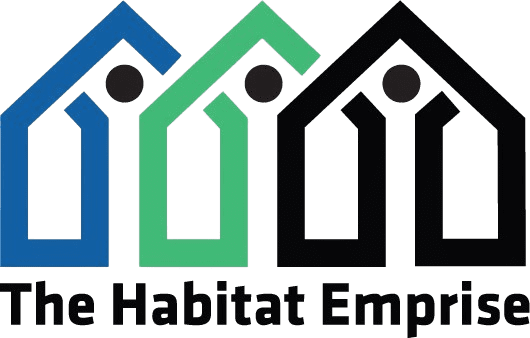India’s housing sector stands at a critical crossroads. As urban populations grow and climate challenges intensify, the country must meet the demand for affordable housing while ensuring long-term sustainability. The task is not just urgent—it is essential for inclusive and climate-resilient development.
The urban housing deficit: According to the Ministry of Housing and Urban Affairs (MoHUA), India faces a shortage of over 29 million urban housing units, with more than 96% of this affecting the Economically Weaker Section (EWS) and Low-Income Groups (LIG) (MoHUA, 2012). Addressing this backlog demands solutions that are not only cost-effective but also environmentally responsible and socially inclusive.
Why sustainability matters in affordable housing: Sustainability is not a luxury—it is a necessity. For low-income populations, operational savings through energy and water efficiency can make a substantial difference in quality of life. Studies from the International Finance Corporation (IFC) show that green affordable housing can reduce energy use by 20–30% and water use by up to 50%, with minimal or no increase in construction cost (IFC EDGE, 2021).
Innovative practices transforming the landscape
- Local and low-carbon materials: The use of low-carbon materials like fly ash bricks, stabilized earth blocks, compressed mud bricks, and agro-waste composites is gaining traction in India. These materials not only reduce embodied carbon but also support local economies and skills.
Case in point: In Rajkot, the CEPT University–DFID collaboration on climate-resilient housing demonstrated a 35% reduction in embodied energy using such materials [(CEPT University, 2020)].
- Climate-responsive passive design: Design strategies like proper building orientation, shaded fenestration, cross ventilation, and thermal mass use can drastically reduce indoor temperatures and energy demands.
Example: In Anantapur, Andhra Pradesh, a passive design prototype developed with local NGOs and technical experts improved indoor thermal comfort by 4–6°C even in peak summer. Similar outcomes have been observed in Dhaka’s climate-responsive housing pilots supported by international agencies.Energy and water efficiency: Simple upgrades such as solar PV systems, LED lighting, rainwater harvesting, dual plumbing, and low-flow fixtures can have major long-term benefits.
Example: The Indore Smart City initiative piloted a water-sensitive neighbourhood model with rooftop water harvesting, decentralized wastewater treatment, and green cover expansion, improving both liveability and resilience.
- Green certification and financial incentives: Green building rating systems like GRIHA, EDGE, and IGBC are adapting their frameworks to be more relevant and feasible for affordable housing. Green-certified affordable housing projects now qualify for lower interest rates, additional FSI (Floor Space Index), and faster approvals in many states.
Example: Ujjain’s revised Development Control Regulations integrated incentives for green affordable housing, a move informed by technical inputs from government partners and sustainability consultants.
Real-world examples with measurable impact
| Project | Sustainability Impact |
|---|---|
| Rajkot Smart City EWS Housing | Reduced embodied carbon by 35% through local material usage and passive cooling |
| TARAgram Eco-Village, Madhya Pradesh | Replicable model using adobe blocks, dry sanitation, and renewable energy |
| Tata Value Homes (Ahmedabad & Boisar) | EDGE-certified developments reducing utility bills by ₹1,000–1,200/month per family |
| BSUP Redevelopment in Bhopal | Integrated greywater reuse, LED lighting, and green roofs to improve energy-water nexus |
Financing and institutional support: New policy instruments, such as the Sustainable Housing Leadership Consortium (SHLC) and initiatives by National Housing Bank, IFC, and GIZ, have enabled banks to support green affordable housing through refinancing, green bonds, and credit guarantees.
Bangladesh and India have also piloted interest rate subventions for certified green affordable housing, proving the concept is scalable across South Asia. Initiatives like the “Transforming the Built Environment through Sustainable Materials” project have helped establish frameworks for public and private sector convergence on green housing delivery.
The path forward: Building sustainable affordable housing is no longer a technological challenge—it is a question of intent, coordination, and scalscale. Local governments, financing institutions, developers, and civil society must collaborate to close the housing gap while staying within planetary boundaries.
At The Habitat Emprise, we believe that sustainable housing must form the bedrock of climate justice and inclusive urban growth. Through on-ground action, policy engagement, and knowledge partnerships, we aim to demonstrate that sustainable is not only affordable—it’s inevitable.
References
- SHLC, National Housing Bank, GIZ. (2021–2024). Green Affordable Housing Reports.
- MoHUA (2012). Report of the Technical Group on Urban Housing Shortage.
- CEPT University & DFID. (2020). Climate Resilient Housing Pilots. TARAgram Sustainable Habitat Programme.
- International Finance Corporation (IFC), EDGE Reports. (2021–2023).
- Indore Smart City Water Sensitive Urban Design (WSUD) Case Study.
- Ujjain DCR Reforms (2023), supported by MP Urban Development Authority.
